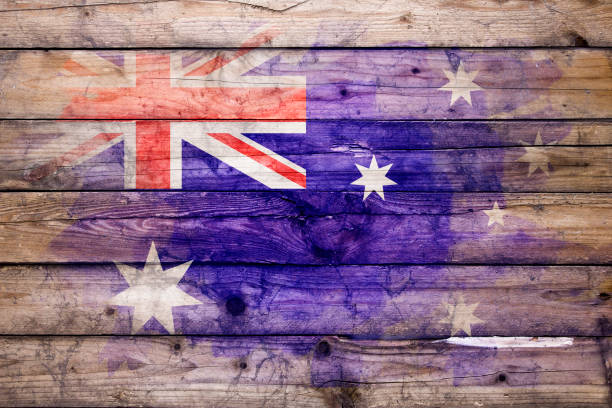
In the golden years of Australian manufacturing, General Motors Holden enjoyed a market share that was the envy of both local and foreign competitors. Out of all the local manufacturers, General Motors (GM) had a brand that was more Australian than the rest. Whilst Ford’s investment in producing cars that were designed and made for Australia was never in question, every vehicle they sold carried the blue oval badge which inextricably linked them to their parent company in the US. Toyota, Mitsubishi and Nissan all endured a similar challenge.
GM, however, was different. Its cars were branded as ‘Holdens’. Sure, any serious rev-head knew GM owned Holden, but somehow, the relationship felt distant and the company producing large, powerful V8s at Fishermen’s Bend in Melbourne was held in high esteem by many Australian motoring aficionados.
A recent market share put Holden at approximately 5% of all vehicles sold in Australia. This is a long way from the close to 30% market share the company had in the 1960s. Whilst many would argue the company had little choice but to cease manufacturing cars in Australia, it’s unlikely anyone would have predicted such a fall from grace for the company with a brand that was once synonymous with ‘football’, ‘meat pies’ and ‘kangaroos’. There’s much that Australian brands can learn from this decline to ensure they don’t face the same fate.
When did it all go so wrong?
When Mitsubishi stopped manufacturing cars in Australia in 2008, the remaining three manufacturers should have revised their approach to what Australians needed. The social fabric of Australia was changing and, with it, the traditional family nucleus was under threat. Couples were marrying later, divorce rates had edged past 50%, the birth rate had fallen below 2.3 and fears of ‘peak oil’ were running high. How did Ford, Holden and Toyota all respond? They placed even greater emphasis on manufacturing large, family sedans with scant regard for smaller more fuel-efficient models.
One is always afforded 20/20 vision in hindsight. Although, the actions of Australia’s three remaining car manufacturers in 2008 suggests that foresight was running short. This is particularly evident when the product line up of Ford and GM in the US is contrasted to Australia. By 2008, Ford and GM were moving away from large, gas-guzzling, sedans in North America. SUVs and energy efficient compacts were the new order. So, why did the model line-up in Australia not adapt?
Inflexibility in manufacturing fused with the benign hope that things would go back to the good old days is probably the most realistic answer. For a while, sales of Holden Commodores and Ford Falcons did increase. Under closer scrutiny this brief was mainly attributed to one thing; Australians realized the only way for oil prices was up. Given this, many buyers decided to have one last fling with owning a V8 and purchased an Australian-built Ford or Holden.
Has General Motors passed the point of no return with Holden?
Perhaps Holden should scrutinize the actions of their traditional rival, Ford. When Ford announced its plans to cease manufacturing cars in Australia, the company was criticized for halting the sale of its flagship model, the Falcon. Two years on it appears the pundits got it wrong and Ford’s marketing execs had the better read on the market.
Ford’s marketing team realized that if a much-loved Australian brand like the Falcon or Commodore is not designed and built in Australia then it really doesn’t matter how good it is; Australian motorists don’t want a bar of it. They looked hard at consumer behaviour and realized the brand loyalty was very much connected to place, not just name.
Whilst the branding team at Ford realized there could never be a non-Australian Falcon, the marketing department at Holden thought they could get away with keeping the Commodore’s namesake and slapping it on a French import.
I recently asked one of my colleagues how he felt about the ‘new Commodore’. He looked surprised and advised “The last Commodore rolled off the production line late last year”. I then showed him the French manufactured Commodore. “Mate, that’s not a Commodore” came the response. “That’s a Peugeot”.
Where to from here?
The challenge facing the marketing team at Holden is not dissimilar from that a number of Australian brands face when going offshore to source products that were once made in Australia. In this instance Holden should have given Australian consumers more credit. It was always going to be an act of Houdini-like proportions to pull off the type of switcharooney that Holden endeavoured to. Or, put another way; die-hard, Aussie motorists are more discerning than what the folks at GM gave them credit for.
To take a high powered, large, rear-wheel-drive Australian-built car and replace it with a front-wheel-drive, under-powered, French import in the naïve hope that no one would notice seemed destined to fail. Surely, no one at GM Holden is surprised at the dip in market share since the French Commodore was unveiled.
Much of branding is about leveraging emotion; whether you’re selling tech products to a younger demographic or expensive European handbags to a high-end socio-economic set. Holden would appear not to be firing on all cylinders in this regard. If I was engaged to consult to Holden, the advice would be simple. Ditch this forlorn hope that a French Commodore will be the panacea to the brand’s current woes. Instead, look to what has always been the key points of appeal for the brand. Namely, large, powerful, rear-wheel-drive cars capable of comfortably traversing long distances. This isn’t to say that Holden should walk away from more fuel-efficient, compact models. To be clear, that is the future. But what Holden needs now is a model that is synonymous with its heritage and a beachhead for the rest of the range.
In GM’s case the panacea has a name. The Chevy Camaro. Will volumes of this vehicle surpass that of the Commodore? Never. But, they don’t need to. Great brands stand for something whilst never standing still. The introduction of a V8, rear-wheel-drive Holden Camaro will send a strong message to Holden’s brand faithful that the company is still serious about its heritage. Sure, it may not be manufactured in Australia, but it is made for Australian conditions and has all the hallmarks that Australians hold in high esteem. Oh, and it looks and sounds nothing like a Peugeot!
The road ahead.
There are some key learnings that any marketer can learn from the Holden experience. Firstly, all brands need a flagship model from which to anchor their marketing efforts- think Audi and its magnificent R8 Supercar. Ford quickly realized this when the call was made to abandon Australian-made cars in 2016. After five decades of building the Falcon brand the company realized it was on a hiding to nothing if it tried to replace it. Not an easy call, but such decisions rarely are. The Falcon brand was discontinued and the Ford Mustang gradually introduced, much to the delight of a nation of rev-heads. Such an approach gave Ford Australia time to re-establish what its brand stood for and enabled them to create an overarching narrative for their brand. It also provided much needed time to tailor its range for Australian households in the 21st Century. All is not lost for Holden, but at a 5% market share, time is running out. Adapting its product range to what Australians really want will be pivotal if success in the long term is to be achieved.
Secondly, brand is very much king as the company grapples with how to appease a once loyal customer base that now feels betrayed by GM. In times of crisis marketers are often best to simply play the shot in front of them. This is where the third important learning lies; Holden’s brand custodians should go back to what made the brand famous. Large, powerful cars perceived as being appropriately equipped for all that the Australian terrain can throw at them. This is the immediate anecdote to the company’s problems and will go a long way to influencing how the Holden brand is perceived in Australia. For a company with a bevy of US models capable of being imported to Australia, the road to redemption seems clear.
This article was first published in Marketing Australia in July 2018




